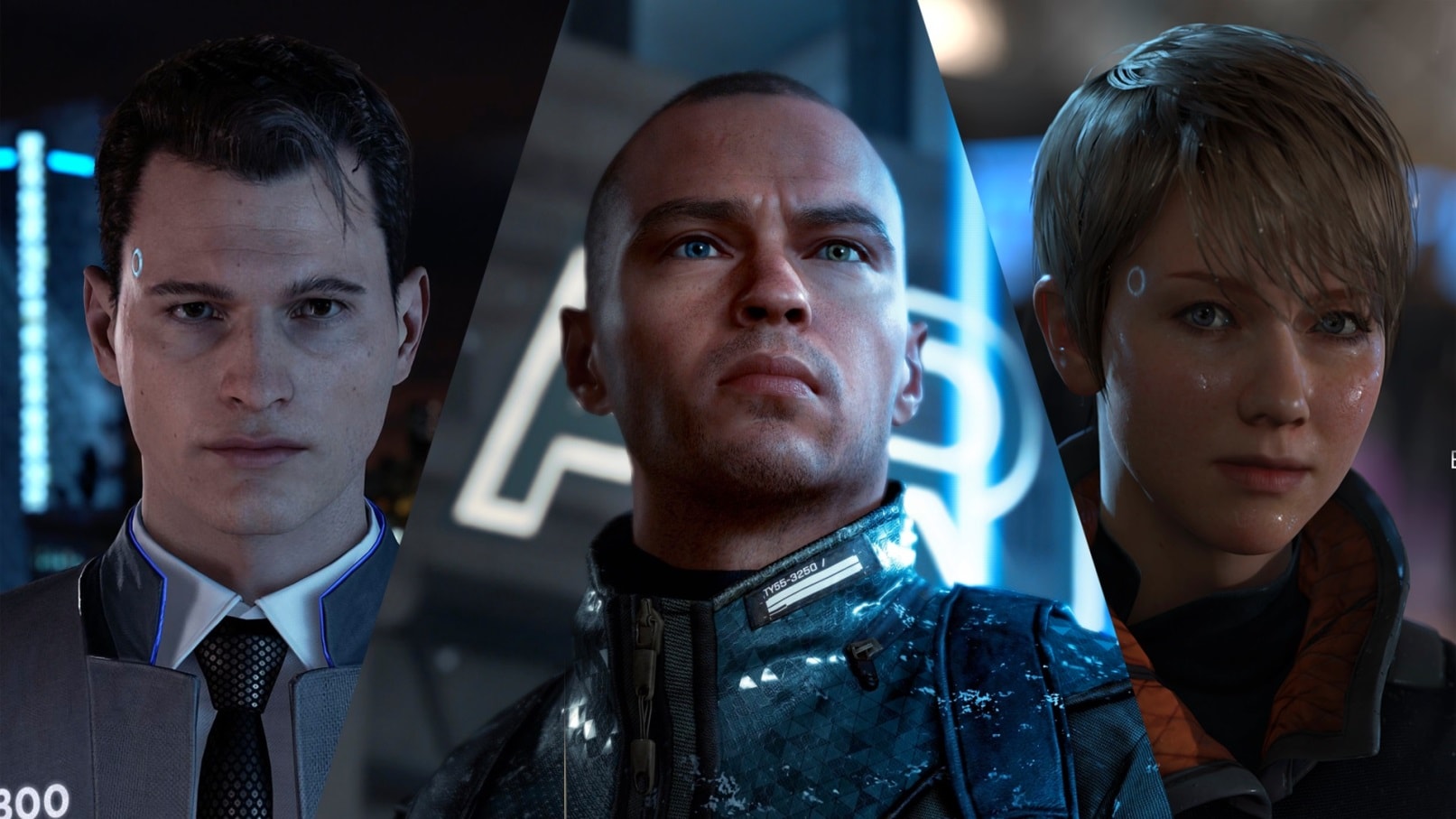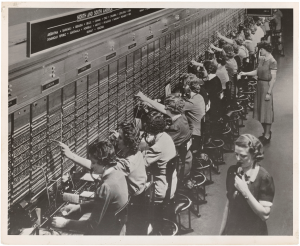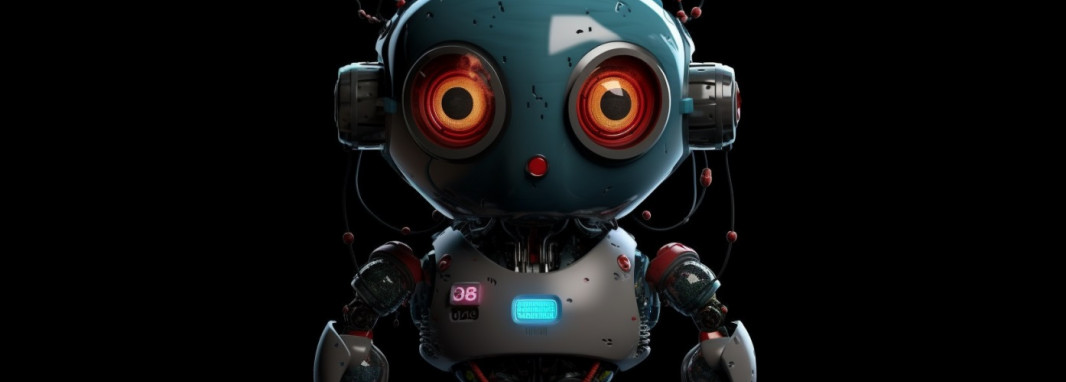At the end of 2022 and the beginning of 2023, the only thing everyone was talking about was Chat GPT, which has practically become synonymous with AI.
It broke into our lives suddenly and caused a new wave of fear among people.
Not so long ago, the main fears were that AI would take over the world, impose its own rules and manage everyone, like The Architect from The Matrix, or it would become Skynet with the only goal to vanish humanity.
And today, that list increased with a new fear of losing a job.

The funny thing is that all these fears go along with the advantages and benefits AI will bring to our life. The Fourth Industrial Revolution, 4IR, or Industry 4.0, is more effective, safe, and precise.
So, which side is right?
Let's dive in and answer what AI is and what is not.
So, what is this artificial intelligence?
John McCarthy is considered to be the author of the term AI. He is usually named as the "father" of AI(I'd rather say the father of definition) and is considered one of the leading scientists in this field.
Back in 1956, he, along with other participants who were preparing a speech for a conference in Dartmouth, defined AI as:
"science and engineering aimed at creating intelligent machines."
Many events and breakthroughs have occurred after, but the term AI definition has always been explained within the paradigm of McCarthy's definition, or at least somehow considering it.
Today we define AI like this:
AI is a field of computer science that deals with the design and construction of computer systems capable of performing tasks that require the intelligence normally associated with human intelligence.
At first glance, this definition is pretty decent and straightforward for intuitive understanding,
But if you delve into the meaning of the words, it will not immediately be possible to explain what "intelligence normally associated with human intelligence" means.
It is customary to perceive almost all human behavior through the prism of intellect, but in reality, not every behavior turns out to be such.
For example, there are a lot of routine actions that define human behavior and are supposed to be tasks that are "associated with human intelligence." Still, because of a routine, they constantly repeat without changing.
Therefore they can be programmed in advance and, somehow, can't be considered as intellect.
To understand this better, look at an excellent example with the digger wasp scientifically called Sphex ichneumoneus.

Upon returning with food, the female wasp should check for any danger inside before bringing food into the hive.
She does it this way; first, she puts food on the threshold, then flies in, and if everything is fine, returns for food and brings it inside.
But if you cheat and move the food while the wasp is in the hive, she will repeat the same procedure from the beginning. And she will do this as long as the food moves.
This shows that the intellect must solve problems and adapt to new conditions on its own, so as not to turn into a wasp that gets stuck in a repeating loop.
Thus, AI must have several arranged traits, like a person who will create this intelligence.
It follows that giving a more appropriate definition of AI is possible.
AI is a scientific field and a technology itself that allows computers to solve human problems like people, being able to adapt to circumstances, learn new things, process information, draw conclusions and make decisions on their own.
Reaching this level is not so easy, and one of the solutions is the gradual complication of the technology that is already commonly called AI, which in fact, is only narrow AI. To fully engage in the field, many professionals are turning to AI training credentials, which validate their expertise and ensure they're equipped to handle evolving challenges. To understand this topic better, you need to get acquainted with four types of AI.
Four types or stages of AI (as you like)
Classifying AI is a familiar idea, and many people have done it, but Arend Hintze's classification of AI is considered the most successful. Arend proposed four categories to understand better and further develop AI.
Reactive machines
This type of AI cannot remember what is happening, has no memory of the past, and cannot analyze future situations based on premises. All it does is choose the best solution in the given case here and now.
A great example is IBM's Deep Blue, a unique supercomputer that beat chess grandmaster Garry Kasparov back in 1990.
Deep Blue is a typical reactive machine AI that only knows how the pieces on the chessboard move and is limited by the rule not to repeat the same movement three times, and that's it.
So if the situation with the pieces on the board is repeated, it will always do the same thing. This behavior is reminiscent of the Sphex ichneumoneus that I mentioned earlier.
Reactive machine AI will behave exactly the same every time they encounter the same situation. This can be useful in highly specialized conditions, like when all we need is to drive a car along a given trajectory.
But the lack of the ability to adapt can lead to problems.
For example, if construction work is underway on the road along which the trajectory lies, the traffic direction has changed, or something else. In such cases, a reactive machine vehicle won't make the right decisions or respond adequately to hazards on the road.
This underscores the importance of developing AI that can adapt to changing conditions and learn from new experiences to operate more safely and efficiently in the real world.
Limited memory
These systems can look into the past and observe over time rather than relying solely on immediate information. Then, continuing the AI-driven car analogy, imagine self-driving cars, which monitor the speed and direction of other vehicles and incorporate this information into their decision-making process.
However, although such artificial intelligence has memory access, it only stores it for a short time. Thus, it cannot learn and gain experience in further situations. All it can do is use the information for immediate action or decision.
In order to build AI systems that can develop full representations, remember experiences, and learn from them, becomes challenging. One approach is to address this challenge is through methods inspired by Darwinian evolution.
These methods allow AI systems to build their own representations and adapt to new situations. Furthermore, using evolutionary algorithms, AI systems can iterate and improve their performance over time, similar to how living organisms evolve and adapt in nature.
Theory of mind
We do not know how to create such AI yet, but we are moving in this direction. The definition of such AI is closely related to what in psychology is called the "theory of mind" self-understanding of other people.
For example, understanding that they may have goals, intentions, emotions, etc., that influence their decisions.
Artificial intelligence with a theory of mind, is a computer program that can understand how people think and feel. It can predict what people will do and why they will do it.
Such a program can detect when people are happy, sad, angry, or experiencing other emotions.
It can use this information to better communicate with people and be attentive to their needs and desires. AI, with the Theory of Mind, helps computers be smarter and more social to be useful to humans.
Self-aware AI
As the name says, this AI must have self-awareness, as humans do.
And this is the next stage in AI formation after the theory of mind. Usually, in this place, new problems come in, ethical problems, I say.
As if an AI becomes self-aware of itself, then in some sense it becomes a person. You may have seen such AI self-awakening in the movie I, Robot, or in the game Detroit: Become Human.

This type of AI will understand people, know about their emotions and thoughts, and simultaneously understand the lack of this in itself and have something different instead, something artificial.
And here, another problem enters the scene, which can be defined as the birth of Skynet since it is not clear how AI will react to this.
Here, you can speculate endlessly, build hypotheses, write dystopian books, make apocalyptic films, and so on.
But in any case, it is worth understanding that we are not even close here, and moreover, it is not even clear whether we can even create such a high level of AI.
Since everything is so complicated here that it is not even clear whether this is possible at all.
Judging from these four types/stages of AI, the first definition we gave says that, at this moment, AI does not exist. But why is everyone talking about it as if it exists?
It's simple, and this is because AI is usually divided into narrow and general AI, also known as weak and strong AI.
Narrow AI can only take on a certain range of human tasks, and the more advanced it is, the more opportunities it provides.
General AI can perform all tasks as a human, probably even better, be self-aware, etc.
This division can be regarded as an evolutionary process in which we are not looking for the lost link but know in advance about all the links.
And if we continue the analogy, we are now approximately in the "Australopithecus" phase and moving towards Homo sapiens.
And to go through such a path, AI must improve itself drastically. It must learn and be taught. Now there are several training methods for this.
AI training methods
To stop being a reactive AI, it needs to have a memory and be able to assimilate new information, compare it with previous information, and make general adjustments to learn.
This process, or even a subdomain, is called machine learning. And at the moment, four main types of learning are used in machine learning.
Supervised learning
The point of this machine learning is to learn how to properly categorize data, how to sort it, and so on. For this purpose, people prepare pre-marked categories of data.
So, for example, you can teach it what a cat is by showing it several thousand different pictures from different angles and options marked as a cat. And as a result, AI will know such an entity as a cat, MEOW.

Unsupervised learning
It is useful for self-identification of individual characteristics and traits based on which AI will make categories. However, unlike supervised learning, we do not know what the result will be in the end.
AI independently decides what, where, and how to correlate; people do not follow the process.
Semi-supervised learning
This is a combination of the previous two methods, where the AI receives a small amount of data marked in a special way and uses them in its further self-learning. In this case, we also know in advance what the result should be in the end.
Reinforcement learning
AI will be directed toward the desired result. For this, positive reinforcement is used in case of success and negative reinforcement in case of failure.
Moreover, the reward can increase if the task is completed more correctly, or vice versa, decrease if the AI goes the wrong way. This approach is similar to playing a hot-cold game.
Machine learning uses different methods, approaches, as well as special models. These models are algorithms that are used to detect patterns in data and make decisions based on them.
One of these types of models is neural networks, which will be explained next.
Neural networks
Neural networks are one of the most common types of AI learning based on the repetition of the work of human neurons.
It is a network of artificial neurons (perceptrons), which are computational nodes that categorize or analyze information.
At each level, perceptrons perform the necessary operations and pass information to multiple nodes further to the next level.
If the training model has more than three such layers, then it is called a deep neural network or simply deep learning.
Neural networks have different types as well, so let's define the most used.
Feedforward neural networks (FFNN)
We begin with the oldest one, and this is the feedforward neural network. Data flows straight from one layer of perceptron nodes to the next, all the way straight through to the final result.
These are usually one of the most powerful neural connections, and they also have a special backward error algorithm that goes from the result back to the first perception, thus increasing the accuracy of the result.
This error correction algorithm is called backpropagation.
Recurrent neural networks (RNN)
RNN Recurrent or repetitive neural networks (RNNs) differ from direct ones in that they store time sequences in memory. For example, they can store words from previous layers and display them in current ones.
Recurrent neural networks are suitable for speech recognition, image captions, etc.
Long/short-term memory (LSTM)
Among the types of NN, one more stands out. Long-short memory NN is an extended version of the RNN, so it can memorize not just words but entire layers of information from previous layers using special memory cells.
Most often, like the previous one, it is used for speech recognition.
Convolutional neural networks (CNN)
Convolutional NN is commonly applied to images. The point is that they process images layer by layer, parsing them to the smallest details, such as colors, traits, and edges, and then collecting them back into one common layer.
This is the most general model of all neural networks.
Generative adversarial networks (GAN)
GANs (Generative Adversarial Networks) work through the game competition of two NNs, where one sets the conditions and the second tries to either prove or disprove the first NN.
With the help of GAN, realistic images can be generated that can be used in graphics, advertising, games, etc.
We have finished with the technical part; now, let's talk about the common thing and what benefits AI already brings.
AI benefits
AI can have a lot of benefits. For example, it can help automate work by taking on complex and attention-demanding things like catching defects on a conveyor line.
It can monitor cybersecurity by continuously monitoring network traffic. In general, AI can reduce human error by taking repetitive actions on themselves.
Moreover, it can handle vast amounts of data with rigorous analysis, can calculate complex formulas, and generally be more accurate than any possible human. In more detail about the benefits, here are some of them.
Autonomy
AI can be designed to work independently and make decisions without the need for constant human involvement. This allows autonomous systems to perform tasks and functions automatically.
Automation
AI can automate routine, repetitive, and time-consuming tasks, freeing up people's time and resources for more complex and creative tasks.
You may use a Gamma AI to automate the process of getting reports, making presentations, and saving time on tasks that require more time.
This improves work efficiency and allows you to focus on strategically important tasks.
But the most important thing is that it will simply improve the quality since I cannot imagine a person who can vigilantly look for a defective product on the carpet line and not make a mistake.
And imagine a line that is processed 24 hours, without interruption and at a speed three times faster than any person can do.
High speed and accuracy
AI can process and analyze large amounts of data in the shortest possible time, allowing it to produce results faster and more accurately than is possible for a human.
This is especially important in areas where fast response and high precision are required, such as medicine, finance, and computer-aided manufacturing, as in the example mentioned before.
Pattern and trend detection
AI has the ability to analyze large amounts of data and uncover hidden patterns, connections, and trends that may not be visible to humans.
This allows you to predict future events, make more informed decisions and optimize business processes.
This part is tightly connected with propensity models. With the help of this, you can draw up detailed development strategies, as they show who the buyer is, his average buy lifespan, etc.
Working with large amounts of data
AI is capable of processing and analyzing vast amounts of data, including structured and unstructured data.
This allows you to extract valuable insights and information from big data, which helps in decision-making, planning, and prediction.
User Experience Improvement
AI can be used to create personalized recommendations, offers, and services based on the analysis of user data. This improves user experience and customer satisfaction.
All of these AI benefits are abstractions for describing capabilities, but what's even more interesting are real AI cases.
AI success stories
We took some interesting use cases from different spheres to cover this topic widely, and we also recommend viewing our personal portfolio on how we applied AI for our clients.
Best way to explain how does AI work is to look at an example, and ChatGPT is a great one.
OpenAI and ChatGPT
OpenAI is a company that has built all activities around AI. And Chat GPT is their masterpiece. Chat GPT is a computer program that uses artificial intelligence to interact with people in a chat format.
They also provide their API, which in turn spawned an AI startup boom in early 2023.
Chat GPT is trained on large volumes of texts to learn how to understand the questions people ask and generate appropriate responses, which allows it to answer questions, provide information and keep the conversation going.
Chat GPT can be used in a variety of areas, such as education, customer support, or just for fun. The spectrum is so wide that you need to write a separate article for this.
Insilico Medicine
Insilico Medicine is using AI to develop new drugs and explore possible therapeutic targets.
They use deep learning, genetic algorithms, and other machine-learning techniques to analyze molecular structures, model biological processes, and predict the potency and toxicity of potential drug compounds.
The company also develops specialized platforms and tools to support AI and pharmaceutical research.
Siemens
With the help of AI, Siemens optimizes and automates production processes in various areas of its enterprise, including automotive, energy, engineering, and others.
AI systems monitor equipment health, identify predictive failures, and suggest optimal maintenance and replacement measures.
This helps prevent accidents and reduce machine downtime, which in turn improves production efficiency and productivity.
Netflix
Tudum! Netflix collects a lot of data about the preferences and behavior of its users, including movies watched, ratings, genres, and other factors.
Using machine learning algorithms, AI analyzes this data and creates unique preference profiles for each user.
The AI then uses these profiles to recommend movies and TV shows that the user is most likely to enjoy. AI algorithms take into account similarities between user profiles, previous preferences, and movie popularity and ratings.
This allows Netflix to create personalized recommendations that help users discover new and interesting content.
Through the use of AI for recommendations, Netflix improves the user experience and helps its users discover new movies and TV shows they can enjoy. It also helps Netflix improve user satisfaction and retention on the platform.
Problems and issues of AI
AI has a number of problems, some of which we mentioned earlier. Today, they are all purely hypothetical, as they relate mostly to broad AI, which does not yet exist.
However, these problems are already in the air, and the right thing to do is to sort them out on the shore. The more we prepare, the less real problems will arise in the future.
Disclaimer: everything written, including assumptions, is completely the author's fantasy and purely hypothetical reasoning and not a strict analysis and forecast of the future of mankind.
Job Loss Problem
Perhaps the most urgent problem in today's context. AI has come close not only to such areas where it is required to replace routine repetitive actions, but it has also reached the path of creativity.
Chat GPT, Midjourney, Google Bard, GitHub Copilot, and others can now generate creative content, write articles, create pictures for every taste, write poetry, write code, etc., and you involuntarily start to think about: "How long it last for me to work and write articles like this one?)."
But as the practice of previous generations has shown, everything is not so bad. New technology has appeared and made a certain action or even a profession unnecessary, as it once happened with switchboard operators.

In creative professions, the element of creativity turned out to be decisive, and the new round of AI, of course, turned out to be wildly smart but not able to show the depth and special vision that only a person can give.
The Internet is full of examples of how AI-generated content is not perfect and how it is often false, thus referred to as hallucinating AI quite often as well. So massive job loss is not yet on the table.
AI is a rather useful tool that helps you do things better and faster, like the difference between a manual and an electric screwdriver.
Moreover, the world is now in a state where work is acquiring new functions and tasks and often flows from one state to another and requires constant development.
At this stage, only those jobs that come down to routine actions that are very easy to automate are at risk, and there are quite a few of them, and the loss of such jobs is actually useful.
This moves progress forward and frees up human power for more important tasks.
Replacing human interaction
AI can become a kind of replacement for real people. It can understand your pain, listen to your complaints, cheer you up in every possible way, show only things tailored to you, and much more.
All this can lead to a state where AI is your best friend, so much so that you may feel like you don't need other people in your life at all.
This problem is very similar to online addiction or even hikikomori.

But the experience of real self-isolation, which almost the entire planet has endured due to covid-19, and how this self-isolation ended, gives hope.
Despite some advantages of such a life, especially in the case of remote work at the computer, people did not become recluses. They still go places, meet new people, get new experiences, etc.
So the AI assistant/friend/psychologist future where it will replace normal human communication seems unlikely.
Rights of AI
AI having self-awareness is practically a person in the modern understanding of philosophy. Even if these are all complex and ambiguous terms, they will still put AI on a completely different level, where the majority will perceive it on an equal footing, according to the principle of the mind.
Here you can slide into the problem of masters and slaves because if we are served by a person that we essentially will possess, this will inevitably plunge us into this plane.
Which brings us to the question, what rights should AI have, and should it have them at all? Because on the one hand, it is a person but without a body, which means it is not alive. It is not an organism.
On the other hand, we eat living organisms and use them in different ways a lot, but we are not considered as individuals. And then there is another question: "What is more important: the body or the personality?"
As you see, this topic is very complex.
AI that controls everything
Considering that AI will have consciousness, permanent memory, a super-fast brain, etc., that is a certain temptation to make AI the world's problem solver.
After all, if it is wise, has no vices, and surpasses all people in every sense, then what is wrong with this idea?
But everything is not so simple here because even if we do not consider dystopian and apocalyptic scenarios, AI will still end the human era in this case.
If AI solves all global issues, regulates conflicts, and guides humanity in every possible way, then in this way, it will dictate what we should do, which means it will be the one who rules, and we are the ones who listen.
People will no longer be at the top. They will be the second, and the next qualitative leap in evolution will be under consideration of AI.
But maybe that's not a bad thing. It may lead to the next step eventually, where humans and AI tie into one organism that is no longer human and no longer AI. And that can bring us closer to the technological singularity. Who knows?
Tying things together
The world may seem like a place that changes spontaneously and immediately under the influence of new technologies, but it is not so. It is more like a flowing liquid slowly changing from one state to another.
And each new technology is gradually introduced, which gives time for a smooth adaptation, without huge stress.
Therefore, my advice is not to take all these problems too personally, but to look at the situation with a calm mind, see the perspective and understand how it can help you.
At this stage, AI can accurately be described as a useful tool that is still at the stage of competitive advantage. Those who have it are more successful in this business race.
But it must also be taken into account that the pace and trends of development also indicate that soon AI will become a common thing, and then those who do not have it will simply no longer be able to take part in this race at all.
This is the end of this article, so I wanna thank you for spending your time reading this.
By the way, our company Zfort Group as artificial intelligence development company helps entrepreneurs, businessmen, and simply active, energetic people to gain the benefits that AI provides.
Zfort Group is one of the top artificial intelligent development companies.
Contact us, and we will help bring your idea into reality.





